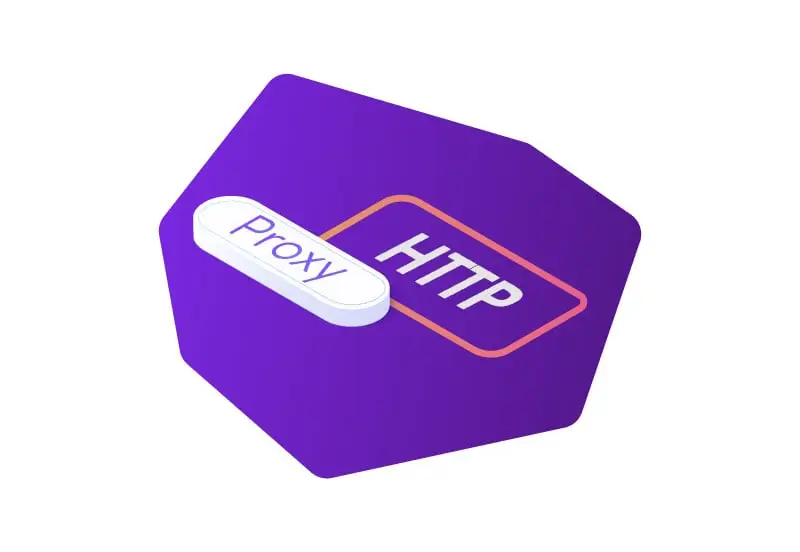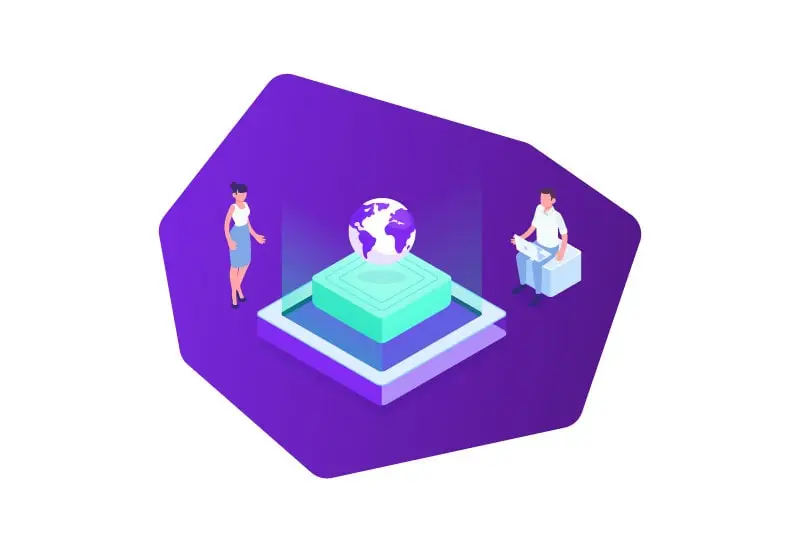In today’s interconnected digital world, the flow of information is paramount, and efficient communication is essential for seamless online experiences. At the heart of this communication lies the Hypertext Transfer Protocol (HTTP), a fundamental protocol that enables the transfer of data between web servers and clients. However, what does HTTP proxy mean in this context? An HTTP proxy serves as an intermediary between a client and a server, acting as a gateway that facilitates and controls the exchange of HTTP requests and responses.

In this article, we will delve into the intricacies of HTTP proxies, exploring their functions, mechanisms, advantages, and how to set them up, providing you with a comprehensive understanding of this vital component of the modern web.
How Does an HTTP Proxy Work?
Have you ever wondered how your web browser seamlessly retrieves information from across the internet? The answer lies in the ingenious workings of an HTTP proxy. So, what is a proxy, you ask? In simple terms, a proxy is a middleman, a digital emissary that stands between you and the vast expanse of the web. Just like a guardian angel, an HTTP proxy shields your identity and facilitates secure communication with the websites you visit.
Imagine you’re sitting in a bustling café, craving your favorite cup of coffee. You can either walk up to the counter yourself or enlist the help of a friendly barista to bring it to your table. In this analogy, the café represents the internet, your table is your web browser, and the barista is the HTTP proxy. Instead of directly interacting with the server (the counter), your browser sends its requests to the proxy (the barista), who retrieves the desired information on your behalf. This process not only adds an extra layer of security but also grants you a myriad of other benefits.
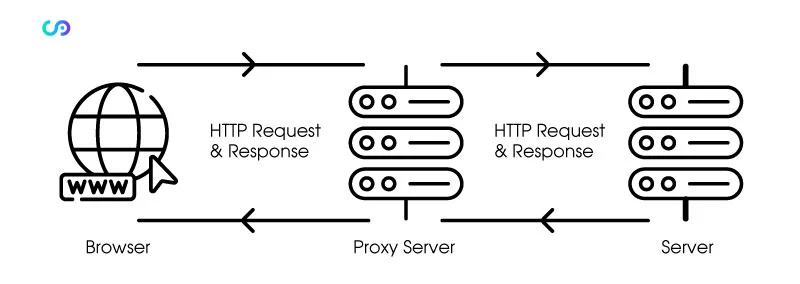
Now, let’s dive deeper into how this digital barista goes about its tasks. When you initiate a web request, your browser sends it to the HTTP proxy. The proxy then acts as an envoy, forwarding your request to the appropriate web server. But here’s the fascinating part: the proxy has the ability to modify and augment your request before it reaches its destination. It can add headers, alter URL parameters, or even cache responses for quicker retrieval in the future.
Additionally, proxy servers have another trick up their sleeve known as proxy chaining. Imagine a relay race, where multiple runners pass the baton to one another until it reaches the finish line. Similarly, proxy chaining involves a series of interconnected proxies working together to deliver your request. Each proxy in the chain adds a layer of anonymity, making it difficult for prying eyes to track your online activities.
To ensure a secure transmission of data, HTTP proxies also employ a technique called tunneling. It encapsulates your requests and responses within an additional layer of encryption, safeguarding your sensitive information from potential eavesdroppers.
So, the next time you browse the web, take a moment to appreciate the work of these digital baristas – the HTTP proxies – diligently managing your requests, protecting your privacy, and ensuring a seamless online experience.
Advantages of Using an HTTP Proxy
In the vast and ever-evolving landscape of the internet, having an HTTP proxy by your side can be a game-changer. These digital gatekeepers offer a plethora of advantages that enhance your online experience, provide added security, and unlock new possibilities. Let’s explore the compelling benefits that come with harnessing the power of an HTTP proxy.
- Enhanced Privacy and Anonymity: In a world where online privacy is increasingly valuable, an HTTP proxy acts as a shield, safeguarding your digital identity. By acting as an intermediary, the proxy hides your IP address from the websites you visit, making it challenging for them to trace your online activities back to you. This added layer of anonymity allows you to browse the web with peace of mind, protecting your personal information from prying eyes and potential threats.
- Bypassing Content Restrictions and Censorship: Imagine being unable to access certain websites or online services due to geographical restrictions or censorship. An HTTP proxy can be your ticket to a borderless internet. By routing your connection through a proxy server located in a different region, you can bypass content restrictions and gain access to websites, streaming services, or social media platforms that may be otherwise inaccessible. This not only broadens your online horizons but also enables you to stay connected with friends, colleagues, and global events, regardless of any restrictions imposed in your location.
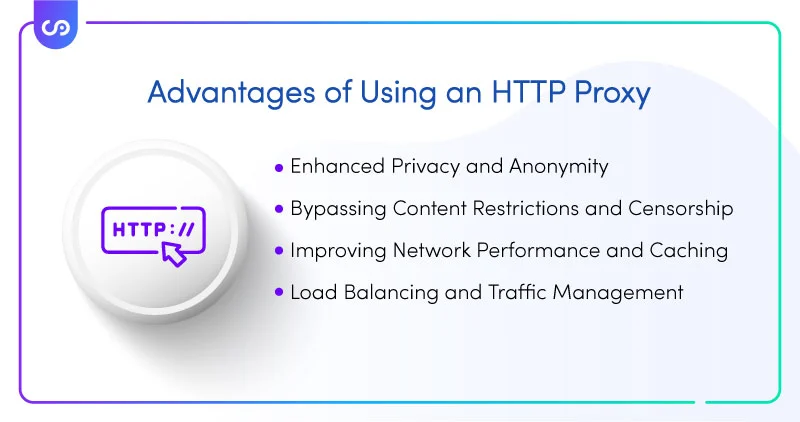
- Improving Network Performance and Caching: Have you ever felt frustrated by slow-loading web pages or sluggish internet speeds? HTTP proxies can come to the rescue by caching frequently accessed web content. When you request a particular webpage, the proxy stores a copy of it in its cache. The next time you or someone else requests the same page, the proxy delivers it from its cache, eliminating the need to fetch it from the original server. This caching mechanism significantly reduces latency, speeds up page loading times, and optimizes overall network performance, resulting in a smoother and more efficient browsing experience.
- Load Balancing and Traffic Management: For organizations and businesses, distributing incoming network traffic across multiple servers is crucial to maintaining high availability and preventing overload. HTTP proxies excel in this area, serving as load balancers that evenly distribute requests among backend servers. This helps to optimize resource utilization, ensure faster response times, and maintain a seamless user experience even during periods of high demand. By intelligently managing traffic, HTTP proxies act as traffic cops, efficiently directing data flow and preventing bottlenecks.
By harnessing the power of an HTTP proxy, you gain an array of advantages – from fortifying your privacy and circumventing restrictions to improving network performance and optimizing traffic management. These digital allies empower you to navigate the vast digital landscape with ease, opening doors to a more secure, efficient, and boundless online experience.
Types of HTTP Proxies
When it comes to HTTP proxies, one size certainly doesn’t fit all. Proxy server types vary in their functionality, level of anonymity, and purpose. Understanding the different types of HTTP proxies empowers you to choose the one that best suits your specific needs. Let’s dive into the diverse world of proxy servers and explore their unique characteristics.
- Transparent Proxies: Imagine a transparent window through which you can see the outside world without any obstructions. Similarly, transparent proxies provide a clear pathway for your web traffic. These proxies don’t modify your requests or hide your IP address, making them easily detectable by websites. Transparent proxies are often deployed by organizations to enforce content filtering policies, monitor user activity, or cache frequently accessed content.
- Anonymous Proxies: If you value privacy and want to keep your online activities under wraps, anonymous proxies are your go-to option. These proxies hide your IP address from the websites you visit, making it difficult for them to trace your online behavior back to you. They act as a middleman, relaying your requests while keeping your identity concealed. Anonymous proxies are widely used by individuals seeking enhanced privacy, bypassing geo-restrictions, or evading surveillance.
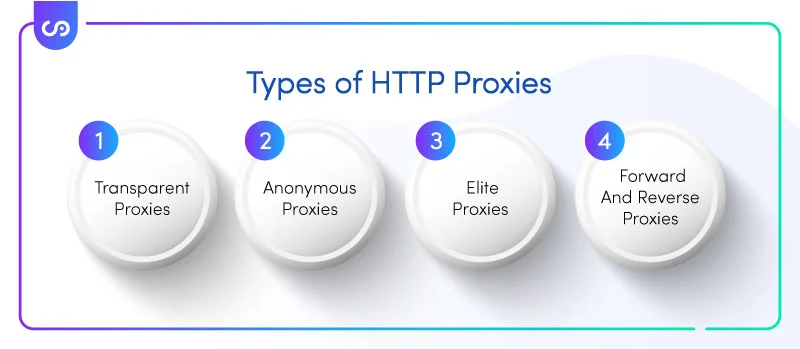
- Elite Proxies: Consider elite proxies as the VIPs of the proxy world. These proxies offer the highest level of anonymity and security. They completely mask your IP address, making it nearly impossible for websites to identify your true location or identity. Elite proxies provide an exceptional level of privacy, making them ideal for activities that require maximum anonymity, such as accessing sensitive information or conducting confidential transactions.
- Forward and Reverse Proxies: Proxy server types can also be categorized based on their direction of communication. Forward proxies act on behalf of clients, forwarding their requests to the intended servers. They are commonly used to bypass content filters, enhance security, or cache web content. On the other hand, reverse proxies sit between servers and clients, receiving requests on behalf of servers. They help distribute incoming requests among multiple backend servers, improve performance, and provide an additional layer of security.
Each type of HTTP proxy offers its own set of advantages and use cases. Whether you seek transparency, anonymity, or load-balancing capabilities, there’s a proxy server type tailored to meet your requirements. By understanding the distinctions between these proxy types, you can make an informed decision and leverage the power of HTTP proxies to enhance your online experience.
Setting Up and Configuring an HTTP Proxy
Congratulations! You’ve recognized the immense benefits of using an HTTP proxy and now it’s time to dive into the practical side of things – setting up and configuring your own proxy. Don’t worry, it’s not as complex as it may sound. In this section, we’ll guide you through the process, empowering you to harness the power of an HTTP proxy with ease.
- Configuring Browser Settings for an HTTP Proxy: The first step in setting up an HTTP proxy is configuring your web browser to utilize it. The process may vary slightly depending on your browser of choice, but the underlying principle remains the same. You’ll need to access the browser’s settings, navigate to the proxy settings section, and enter the necessary details such as the proxy server address and port number. Once configured, your browser will route its requests through the specified proxy server, opening up a world of possibilities.
- Proxy Server Authentication: To ensure the security of your proxy connection, many proxy servers employ authentication mechanisms. This means you’ll need to provide valid credentials (e.g., username and password) to establish a connection with the proxy server. Proxy server authentication prevents unauthorized access to the proxy and ensures that only authenticated users can utilize its services. Be sure to obtain the required credentials from the proxy server administrator and enter them correctly in your browser or proxy client settings.
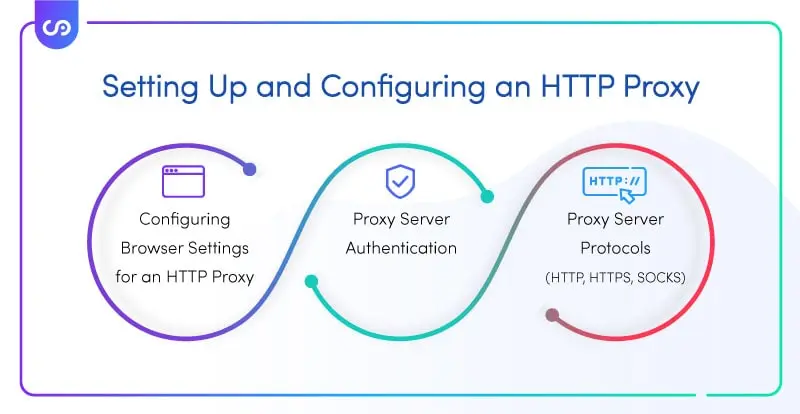
- Proxy Server Protocols (HTTP, HTTPS, SOCKS): HTTP proxies aren’t the only players in the game. There are also HTTPS and SOCKS proxies, each with its own distinct features. HTTP proxies handle regular web traffic, while HTTPS proxies add an additional layer of encryption for secure browsing. SOCKS proxies, on the other hand, are more versatile and can handle various types of traffic beyond just HTTP. Depending on your specific requirements, you may need to choose the appropriate proxy server protocol and configure your browser or client settings accordingly.
Remember, setting up an HTTP proxy is not limited to just configuring your browser. You can also utilize proxy software or applications specifically designed to handle proxy connections. These tools often provide more advanced options and allow for greater customization, making it easier to configure and manage your proxy settings.
So, take a leap into the world of HTTP proxies and unlock a realm of possibilities. With a few simple configurations, you can enjoy enhanced privacy, bypass content restrictions, and optimize your online experience. Whether you choose to configure your browser settings or utilize specialized proxy software, the choice is yours. Embrace the power of the HTTP proxy and navigate the web with newfound control and flexibility.
Conclusion
In a digital landscape where privacy, security, and seamless connectivity are paramount, understanding the significance of an HTTP proxy becomes essential. So, what does an HTTP proxy mean? It is a powerful intermediary that stands between you and the vast expanse of the internet, acting as a guardian angel, safeguarding your identity and facilitating secure communication. By exploring the workings of HTTP proxies, we have unraveled their role in enhancing privacy, bypassing restrictions, optimizing network performance, and managing traffic. We have delved into the various types of proxies, from transparent to elite, and learned how to set them up and configure them to suit our needs. With the knowledge and tools at hand, we can navigate the digital realm with confidence and harness the benefits that HTTP proxies offer. So, go forth, embrace the power of HTTP proxies, and experience the internet like never before – secure, seamless, and tailored to your needs.
FAQs
What is an HTTP proxy?
An HTTP proxy is a server that acts as an intermediary between a client and a web server, facilitating communication and enhancing security by intercepting and forwarding HTTP requests and responses.
Why should I use an HTTP proxy?
Using an HTTP proxy offers several benefits, including enhanced privacy and anonymity, the ability to bypass content restrictions and censorship, and improved network performance through caching and traffic management.
How do I set up an HTTP proxy?
To set up an HTTP proxy, you can configure your browser settings by entering the proxy server address and port number, or utilize proxy software or applications that provide more advanced options for managing proxy connections.

